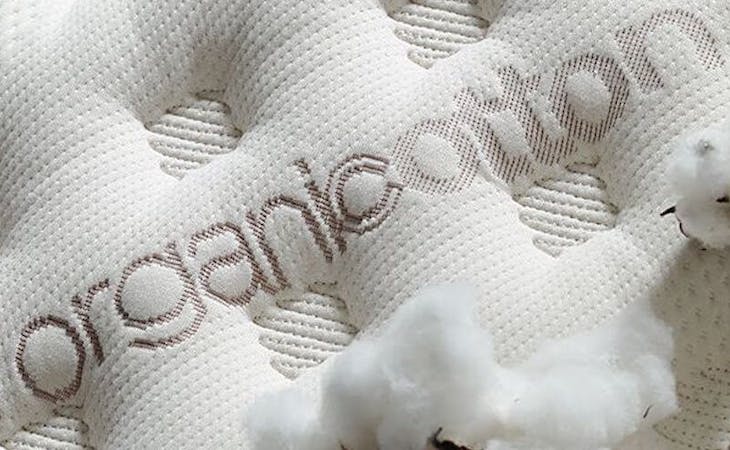When you’re selecting a mattress, chances are you’re thinking about your own comfort rather than the impact your purchase might have on the planet.
According to the Mattress Recycling Council, nearly 50,000 mattresses end up in landfills each day. That’s a pity, since 80% of mattress components can be recycled. Fortunately, mattress recycling programs are starting to gain popularity, with California, Connecticut, and Rhode Island leading the charge. So even if your hometown doesn’t recycle mattresses today, it may well do so by the time you’re ready to dispose of your next one.
Curious to know whether you have a truly eco-friendly mattress, and how the materials and manufacture of the bed you sleep on affects the environment? Here’s a layer-by-layer breakdown.
Mattress cover
Because it’s soft, breathable, and natural, cotton makes an ideal material for a mattress cover. The caveat? Growing cotton takes a lot of water—about 10,000 liters, on average, to produce one kilogram of cotton, according to the Water Footprint Network. Cotton also accounts for as much as 25% of global pesticide use, according to the Organic Trade Association. Organic cotton (a staple of organic mattresses), while still water-intensive to grow, uses no chemical insecticides or synthetic fertilizers, which means runoff won’t contaminate rivers and water systems. It’s safer for workers, too.
Mattress padding
Conventional mattresses often use foam or polyester as top-layer padding. Polyester is not biodegradable, and depending on how it’s manufactured, foam can release volatile organic compounds (VOCs) into the air, a process known as offgassing. An eco-friendly mattress, in addition to using organic cotton, also use natural wool or latex to provide a layer of plush comfort. Wool is biodegradable and has moisture-wicking properties that help keep sleepers cool and comfortable. Also, like latex, it is naturally antimicrobial and resistant to dust mites. (Here’s what you need to know about vegan mattresses.)
Mattress foams
The foam in some mattresses can contain VOCs, a group of compounds that includes nasty chemicals like formaldehyde and perfluorocarbons. Greener foams use renewable plant-based ingredients, such as soybean oil, in place of some of the petroleum derivatives. Eco-friendly foams are also lower in VOCs and contain no formaldehyde or heavy metals. If the mattress isn’t recycled at the end of its life, it is typically compressed and buried, making nontoxic foam not just better for you but for the environment too. A still greener alternative to conventional foams is natural latex. Made from the sap of the rubber tree, latex is sustainable, nontoxic, and biodegradable.
Related: What is an organic mattress?
Innersprings and coils
Springs and coils are typically made of steel, which can be recycled post-use. Some manufacturers (Saatva among them) use recycled steel from the outset. Regardless of manufacture, most mattress recycling programs ship the metal off to steel mills, where it can be repurposed into multiple items.
Mattress flame retardants
Mattress manufacturers have been required to meet federal flame retardant guidelines since 1975. In many cases, that means treating mattress materials with fire-retardant chemicals. Recent studies have shown that those chemicals linger for years inside the human body, and are even passed on to babies during pregnancy. Long-term effects are still unknown, though exposure has been linked to cancer and other diseases. Plus, after disposal, those chemicals can seep from mattress components into the ground and cause contamination.
A greener approach is to use materials that act as natural flame retardants, such as wool and plant thistle. Not only are they better for the environment, but they’re gentler on skin as well.







